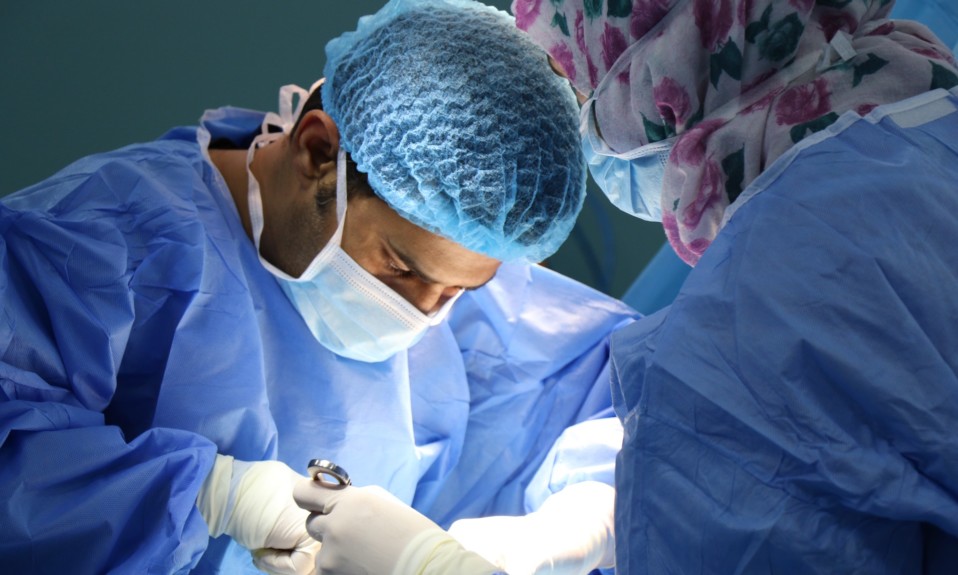Plus, artificial intelligence that can detect alcohol imagery on social media, and a potential home sensor for nighttime opioid withdrawal
By Mark Mravic
As marijuana is decriminalized across the country and its recreational use is mainstreamed, it’s increasingly important to identify adverse effects of chronic use—especially those that might not be immediately apparent. An example emerged from the American College of Surgeons’ 2022 Clinical Congress in San Diego this week, where presenters reported on a study that found that marijuana-dependent patients are at higher risk for infection after arthroscopic surgery.
Also this week, Australian scientists train an algorithm to identify alcohol-related images on Facebook, Twitter and other platforms—with an eye to filtering or blocking such content for those who want to limit exposure; and simple sensors that could help detect when someone in recovery is experiencing sleep disruption that could be a sign of withdrawal.
From The American College of Surgeons:
Higher Post-Op Infection Rates Among Cannabis-Dependent Patients
How might chronic marijuana use affect people undergoing surgery? Using PearlDiver, a national insurance claims database, researchers from the University of Chicago analyzed nearly 1.9 million records of patients who had arthroscopic knee or shoulder surgery, including some 22,000 who also had a diagnosis of cannabis dependence. The researchers checked for three post-operative complications—infection, deep-vein thrombosis (DVT) and pulmonary embolism—and found as much as a twofold increase in the rate of post-operative infection among marijuana-dependent patients. (DVT rates also increased but were not determined to be statistically significant, after controlling for other risk factors such as tobacco use and history of diabetes. There was no difference in the rate of pulmonary embolism.)
“The higher infection rate found by this new study should raise a red flag for patients and providers and should be discussed along with other risk factors before an arthroscopic procedure,” said lead author Sarah Bhattacharjee, MD, now a surgical resident at the University of Washington. Added co-author Jason Strelzow, MD, assistant professor of orthopedic surgery at the University of Chicago, “There’s so much information out there on smoking, alcohol and other substances, but not on marijuana use. As providers and surgeons, we should be discussing marijuana use with our patients, something that we have traditionally shied away from.”
While the presentation, entitled “Marijuana and Joints: Outcomes Following Shoulder and Knee Arthroscopy,” focused on minimally invasive surgery, Strelzow said he would expect similar or more pronounced effects with more open or invasive procedures. The authors call for further research to understand the relationship between marijuana dependence and post-operative complications. Strelzow, for instance, will look at the impact of heavy cannabis use on fracture healing.
From Alcoholism: Clinical & Experimental Research:
Detecting Alcohol Images in Social Media
Social media is awash in alcohol imagery, much of it promoted by the beverage industry through the sharing of photos, videos, links and status updates, and the use of social media “influencers.” Exposure to such cues has been linked to alcohol initiation among young people, as well as increased consumption levels and binge-drinking, and it can be especially problematic for those in treatment and recovery from alcohol use disorder (AUD).
Now computer scientists with the Centre for Alcohol Research Policy at La Trobe University in Australia have developed an algorithm that can accurately identify alcohol images in online media, which they hope will help public health experts measure people’s exposure to such imagery and possibly lead to digital interventions to filter out unwanted exposure to alcohol-related content.
The Australian researchers used more than 190,000 images of alcohol from online search results to train the algorithm—called ABIDLA2 (the Alcoholic Beverage Identification Deep Learning Algorithm Version 2)—to differentiate images of alcoholic drinks from other content, which they say it does with up to 90% accuracy. The algorithm can even identify specific types of drink, including beer, wine, whiskey and brandy, in bottles, cans and cups—though more refinement is needed to improve the detection of champagne and cocktails.
The developers say ABIDLA2 can be used on any type of electronic media, including visual content on Facebook, Twitter, Instagram, YouTube and Netflix. They’ve made it free to use and publicly available, and say it can be applied to future research or public health initiatives. In addition, they anticipate the development of screening tools, such as browser plug-ins and mobile apps, to allow parents, people with AUD and others to filter out online alcohol-related content. “People in alcohol-related rehabilitation or recovery may want to limit the alcohol exposure to reduce craving to minimum, whereas others may want to decrease the amount of alcohol advertisements [they see],” the authors write. “Such a plugin or application may also be useful for parents who wish to restrict alcohol-related content for their children when browsing online.”
From Pain Management Nursing:
A Home Sensor for Nighttime Opioid Withdrawal?
People in treatment and recovery from opioid use disorder (OUD) often suffer from sleep problems that may signify pain, withdrawal or issues with adjusting to medication-assisted treatment (MAT), all of which could lead to relapse. Seeking a solution, researchers at Washington State University looked into whether noninvasive smart technology can detect sleep disruptions as effectively as standard sleep-study methods for people in recovery. Such technology, in treatment settings or the home, offers the potential to alert healthcare providers and lead to medication changes or supportive interventions.
“One day when people go home from addiction treatment, we could send them to a smart home sensor environment, so we can know remotely if they’re struggling to sleep.”
Marian Wilson, Washington State University
Typical sleep monitoring involves either video observation or polysomnography (PSG), the attaching of wires and equipment to the subject to measure bodily movement and other functions. The WSU pilot study, in contrast, used three ambient non-video sensors around the room to monitor subjects during sleep in a research setting. The study found that the sensors’ detection of sleep/wake patterns aligned with PSG and video observation 89.4% of the time.
“We know that poor sleep is a trigger for substance use and could lead to unintended overdose,” lead author Marian Wilson, PhD, MPH, RN, a WSU nursing professor, said in a release. “One day when people go home from addiction treatment, we could send them to a smart home sensor environment, so we can know remotely if they’re struggling to sleep.”
The study calls for additional research to test the technology in a residential environment, as well as adding supplemental sensors to detect sleep apnea and oxygen desaturation. “Such innovations,” the authors note, “could provide a step forward in assessing overnight symptoms important to populations taking opioids.”
Top photo: Jafar Ahmed













